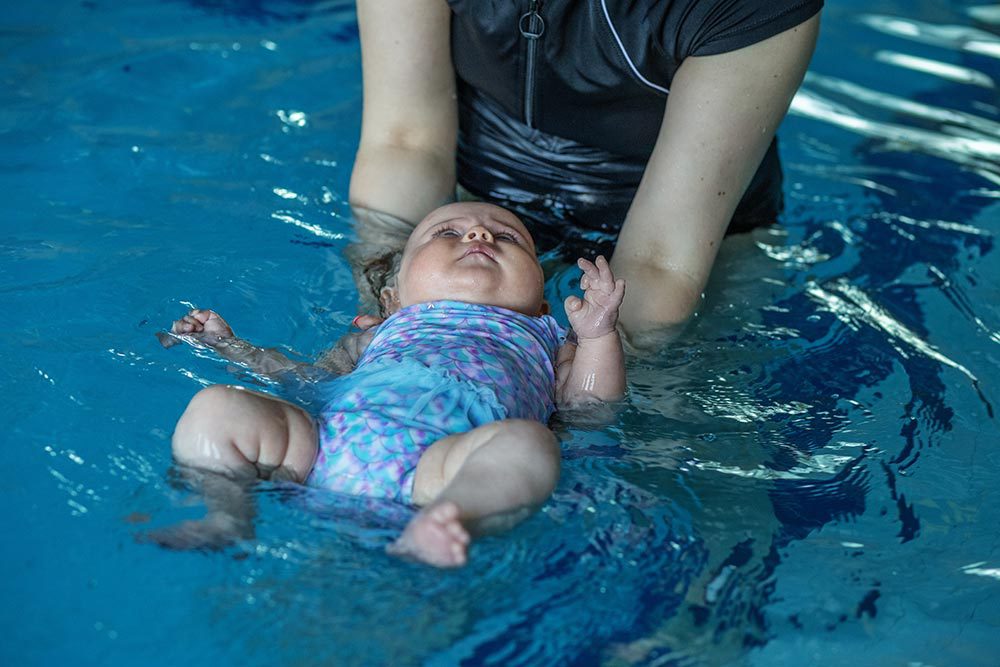Your Guide to Kids’ Water Safety

Drowning is a serious threat to kids (and adults!), but with the proper precautions, you can keep your little ones free from harm while they splash about.
Expert Source: Jessica Box
If one thing can bring on a wave of anxiety, it’s an unattended young child near water. The heartbreaking truth is that accidental drownings occur more frequently than expected. In fact, the World Health Organization (WHO) says drowning is the third-leading cause of death by unintentional injury worldwide (or 7% of all injury-related deaths). For kids specifically, the American Academy of Pediatrics (AAP) says drowning is the leading cause of death in children between the ages of 1 and 4 years old. It is the second-leading cause of unintentional injury death in children between 5 and 14 years old, according to the Centers for Disease Control and Prevention (CDC). Additionally, in 2024, the U.S. Consumer Product Safety Commission (CPSC) reported that fatal drownings in children under 15 years old increased by 12% between 2020 and 2021 (the most recent year with data).
Given just how prevalent the threat of drowning is, it’s essential that parents and caregivers are well-informed of common water hazards as well as what steps they can take to prevent accidents.
What Are the Dangers of Water for Kids?
The CDC reports that every year in the U.S., there are around 4,000 fatal drownings (which comes out to about 11 drowning deaths per day) and an estimated 8,000 nonfatal drownings (an average of 22 nonfatal drownings per day). Additionally, for every child who dies from drowning, another seven receive emergency care for nonfatal submersion injuries.
Drowning is fast and silent, happening in as little as 20-60 seconds, and it often doesn’t look like what you would expect in an environment that seems safe. The National Drowning Prevention Alliance (NDPA) reports that 23% of child drownings happen during a family gathering near a home swimming pool. Still, hot tubs, ponds, bathtubs, or any other body of standing water present a risk of drowning. A young child can drown in as little as one to two inches of shallow water, making water safety absolutely critical year-round.
What Can You Do To Be Water Safe?
Start swim lessons early.
The National Institute of Health found that expert swim lessons decrease the risk of drowning in children by 88%. Jessica Box, a certified infant aquatic specialist in Temecula, California, explains, “The American Academy of Pediatrics (AAP) recommends that children are enrolled in high-quality swim lessons by age 1, and there are statistics that show they work.” She notes that the AAP also differentiates between “formal” and “high-quality” lessons, emphasizing that not all swim instruction is equivalent, and describes her teaching model.
“Children can begin as young as 6 months old. We teach them to survive in the water with the swim-float-swim method, which, even at 6 months, gives them the power to survive in the water, establish good habits and a positive relationship with the water, and also learn basic water safety skills.”
Safeguard your home pool.
In the same way you wouldn’t let your child in the pool without appropriate protection like a life jacket or flotation device, don’t allow your family to spend time around a pool that isn’t properly secured. Pool fences and alarms add layers of safety by preventing accidental access to your home pool. Pool alarms come in various forms, from underwater motion detectors to wearable devices to fence alarms. (Some are even Bluetooth-based!)
While pool gates require additional maintenance, they are well worth the time and effort to ensure an effective barrier to water. Faulty fences and gates can happen, so it’s important to monitor the foundation and latch regularly. The NDPA offers a checklist for ensuring a safe and effective pool gate, which can be found here.
Assign an adult “Water Watcher” at all times.
Adult supervision at a pool is a no-brainer, but not all pools have lifeguards, and not all adults are fully prepared to keep an eye on the kiddos during neighborhood barbecues. Having a designated Water Watcher ensures that someone is always watching for drowning.
Water Watchers should be void of all distractions, meaning no cell phones, friendly chit-chat, or alcoholic beverages. It’s one of the best ways to prevent a child from going underwater without someone noticing and taking immediate action. Water Watchers can also practice touch supervision when applicable and keep baby at arm’s length when in the pool. (Tip: Come up with a wearable “Water Watcher Safety Badge” that lets everyone know who is on watch duty at your gathering, so there won’t be the temptation to engage and distract.)
Is “Dry Drowning” A Real Threat?
Chances are you’ve seen a social media post or two (or 20) cautioning parents about “dry drowning,” a scenario in which a child seems perfectly fine after a day at the pool but starts struggling to breathe a few hours later. These warnings can be understandably worrisome, but “dry drowning” isn’t a term used by medical professionals. In fact, the deaths at the center of the viral stories of “dry drownings” aren’t actually caused by drowning at all, according to UnityPoint Health, but rather are the result of another medical condition. UnityPoint Health also assures that there is no scenario where a child emerges from a drowning situation without showing any symptoms for hours or days and suddenly dies from “dry drowning.”
So, where did the myth of “dry drowning” come from? UnityPoint Health explains that around 10-20% of fatal drowning victims do not have water in their lungs when examined during an autopsy. This is due to laryngospasm, when the body closes its airways as a reflex. In this case, the victim is physically unable to instinctively gasp for air underwater, so water can’t get into the lungs.
Still, “If your child is ever in the situation where they struggled under water and weren’t breathing, they should receive immediate medical attention,” urges Box. In the event your child went under water but was able to come up for air, parents should still closely monitor them and seek medical care for symptoms such as fatigue, coughing that lasts for several hours, vomiting, rapid breathing (if you notice this particular symptom, take your child to the emergency room).
This article has been updated since its original publishing in 2023.








